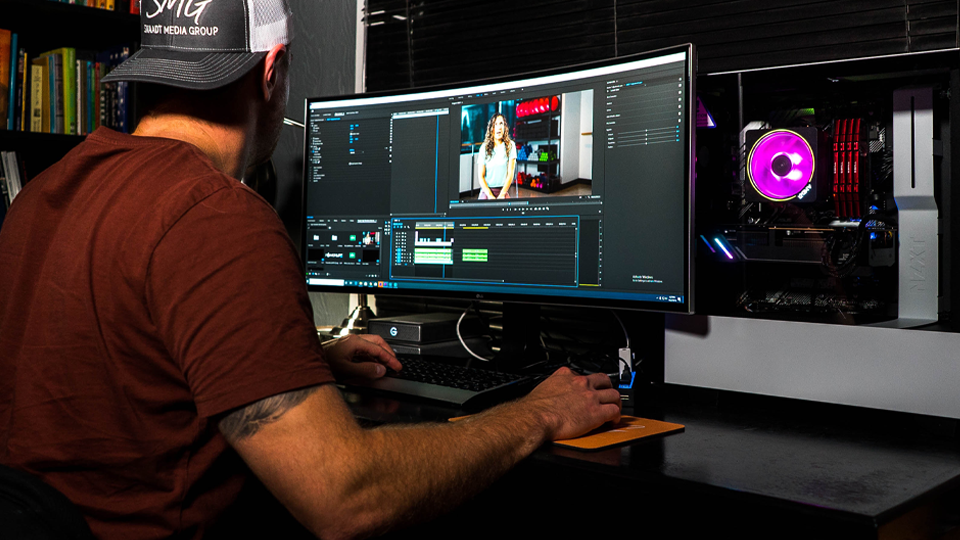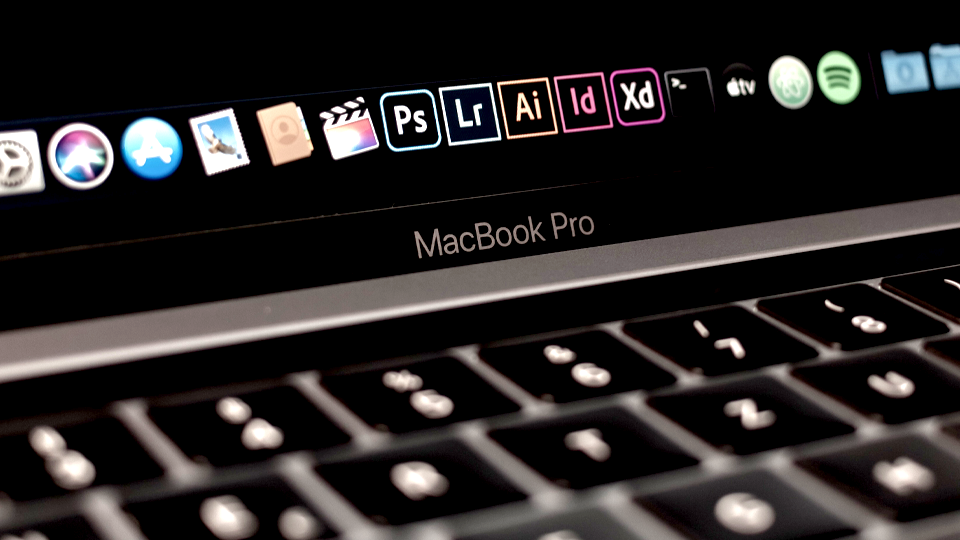The art of sound in film: How sound design shapes the moviegoing experience
The Editors

10 Minutes

Manipulating ambiance, dialogue, special effects, Sound Designers play a key role in everything we watch.
Sound design is essential to filmmaking—whether it's the subtle ambiance of a quiet scene or the explosive effects of an action sequence, it plays a crucial role in storytelling. So what the heck is Sound Design in movies? How does it play a role in the final version of a film? While the visual aspects of film often drive the narrative, it can often be the sound itself that brings the story to life, evoking visceral reactions from the audience on its own merit...
What is Sound Design?
The art of Sound Design involves creating, manipulating & arranging audio elements to support a video’s narrative to create a believable and immersive world. This can include dialogue & production sound captured on-set; sound effects like foley art; atmospheric & environmental sounds that help establish a sense of place; original score & source music, like what plays from a radio set, if it’s shown on-screen; and other auditory elements, like utilizing spatial recording, that may play a role in the greater narrative of a video. Sound Designers edit & mix every audio track separately to find the appropriate balance, clarity & impact alongside the visual content.
The Big Three - Voices, Music & FX
Within Sound Design there are three main branches: Human Voices, Music, and Special Effects. Breaking off from these ideas, audio teams find their nuance by including a vast array of mixing & editing techniques that allow each auditory avenue to shine its brightest while driving forward the narrative of the film.
Human Voices: It almost goes without saying, but dialogue and voice-overs are crucial for conveying a story in any film. Colin Firth’s vocal performance in The King's Speech—and how it was captured & edited by the audio team plays an important role in highlighting King George VI's struggle with his speech impediment. Capturing, editing & mixing this audio with a deft touch allows the storyline to speak for itself within the greater plot.
Music: From a hot-rockin’ soundtrack to an expansive, emotional original score, music can quickly set the tone of a film; equally, whenever & however music appears in a movie’s timeline, it can serve to enhance the emotional resonance of its story. Scores and soundtracks can evoke feelings ranging from joy to terror, and everything in-between. The next time you sit down to watch Interstellar, pay attention to Hans Zimmer’s use of powerful organs and droning orchestral sounds to evoke the vastness and mystery of space. Without it, the movie would be different…
Sound Effects: Sounds Effects help create a sense of realism, or fantasy, emphasizing certain actions or events on-screen, like footsteps, the rustling of clothes, or the grunting of a beast in a fairytale. Often crafted in in a studio during post production, the effects produced by Foley artists act to recreate everyday sounds that sync with the on-screen action; meanwhile digital sound effects teams work to create the rest, like the dinosaur roars in Jurassic Park, which were crafted from a mix of animal sounds & altered with FX to create the final noise.
Enhancing Atmosphere: Dunkirk
Christopher Nolan's "Dunkirk" is a film that showcases how vastly sound design can enhance the atmosphere and tension of a movie. The film’s soundscape, created by sound designer Richard King and composer Hans Zimmer, serves to immerse the audience in the chaos and intensity of war. The use of practical sound effects, such as the roaring of airplane engines & the piercing wailing of bombs falling through the sky, combined with the innovative use of ticking clocks, heightens the sense of urgency and suspense. In a scene where soldiers are trapped on the beach under threat from enemy aircraft, Sound Design plays a crucial role. The overwhelming buzz of the incoming planes, the booming explosions, and the sound of incessant gunfire in the distance create a visceral experience that pulls the audience into the soldiers' plight. This meticulous attention to aural detail not only enhances the visual narrative but intensifies the emotional impact of the moment, making viewers feel the desperation of the characters.
Building Tension: A Quiet Place
In A Quiet Place, sound design is not just an element of the film but a pivotal part of the narrative itself. Director John Krasinski even wrote silence as a character into the script. So, the sound design by Erik Aadahl and Ethan Van der Ryn is crucial in creating suspense, and the absence of sound in many scenes makes the few noises that do occur incredibly impactful. Utilizing the power of negative space, the Sound team here ensures the audience becomes hyper-aware of every rustle, whisper, and breath to make even the smallest sounds feel significant.
Evoking Emotion: Star Wars
The Star Wars franchise, with sound design by Ben Burtt, showcases how iconic sounds can evoke strong emotions and create a memorable, lasting cinematic experience. From the buzz of lightsabers to the distinctive beeps of R2-D2, the sound design in this series is integral to its identity. Looking back at the original movies, there are so many iconic sounds—one of the most well-recognized sounds in film history is Darth Vader’s breathing, a simple yet foreboding sound that immediately conveys his menace. Similarly, the iconic sound of a lightsaber igniting brings a sense of excitement and anticipation every time it lights up. Most importantly, though, these auditory elements enhance the storytelling by further establishing the galaxy in which Star Wars exists.
The Psychological Impact of Sound Design
Using sound to evoke emotions, build tension, and enhance storytelling is a fundamental aspect of sound design in film ever since it was introduced. We all know what happens once the scratchy record starts playing… These auditory cues, when artfully implemented, tap into the instincts of the audience, triggering emotional responses from the audience. High-frequency sounds, like the screech of a violin or a piercing alarm, can induce a sense of urgency and discomfort; conversely, low-frequency sounds, such as a distant thunder or the growl of a tiger, can evoke a visceral feeling of dread & horror, bringing the audience further into the world.
Sound design also plays a crucial role in enhancing the emotional depth of characters and scenes in the film itself. By employing leitmotifs, which are recurring musical themes associated with specific characters or ideas, sound designers can reinforce the emotional and narrative significance of these elements. For example, a heroic character might have a bold, uplifting theme that underscores their bravery, while a villain might be accompanied by a dark, ominous motif that accentuates their malevolence. These sonic signatures help the audience form stronger emotional connections with the characters. Moreover, sound cues can foreshadow events, or signal the presence of a character, guiding the audience's expectations. This careful manipulation of sound not only enhances the emotional depth of the film but also heightens the audience’s engagement with the narrative & the cinematic experience on the whole.
Final Thoughts
Sound design shapes the movie experience more than the average moviegoer realizes. Still don’t believe us? Try watching a horror flick with the sound off—while the visuals will surely scare, the movie won’t grab you quite as powerfully without its ability to use sound. Without the scratchy record player, is that villain really that terrible? You can be the judge. So, it comes to Sound Design to help define the nuances of a story. By understanding the importance of the aural component, everyone can better appreciate what’s possible with the right mix.




































